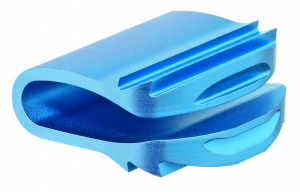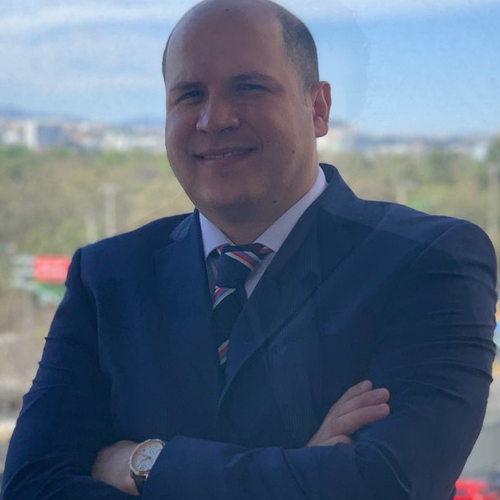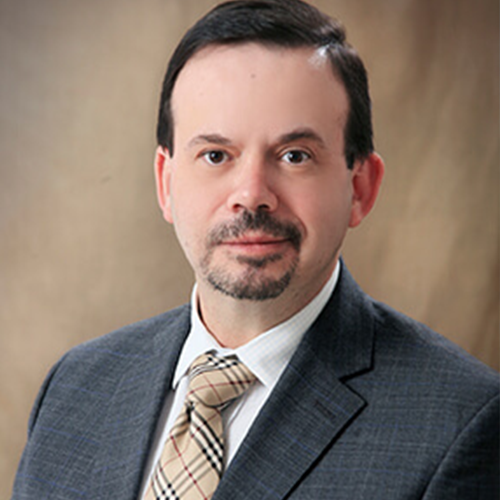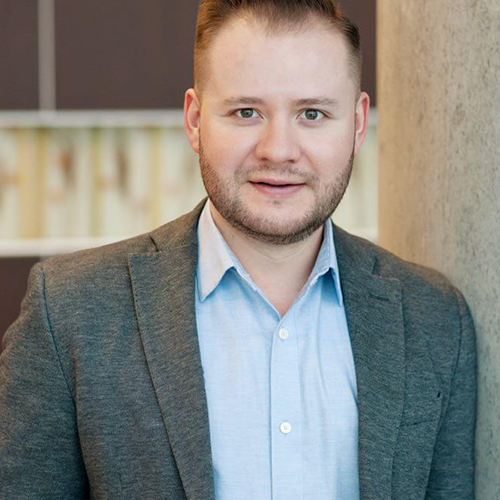Currently, cervical discectomy and fusion is the most common operation for treating patients with symptoms related to disc herniation or degeneration. During this procedure, the problematic disc is removed, and it is replaced with bone graft and implants. When fusion takes place, consequently, movement is no longer allowed in that part of the spine. Loss of mobility is one of the main downsides of cervical fusion, which can add more stress in the adjacent cervical discs. This extra stress can overtime degenerate these adjacent discs and cause more problems. Several studies suggest that artificial disc replacement is comparable to cervical fusion in relieving symptoms caused by disc herniation and nerve compression.
A disc replacement device is typically composed of two metallic surfaces one of which is attached to the upper and the other to the lower vertebra at the affected disc level. These metal implants can then slide on each other directly or can be separated by a piece of medical grade plastic. The device allows for motion between the two vertebrae to be maintained and avoids the need for fusion. The disc replacement device can be secured in place with screws, or it may have a press fit anchor that holds the implant to the bones
Theoretical Advantages Of Cervical Disc Replacement (CDR)
- Maintaining normal neck motion
- Reducing cervical degenerative disc disease of adjacent segments of the cervical spine
- Eliminating potential complications and issues associated with the need for a bone graft for spine fusion and the cervical spinal instrumentation used in cervical fusion surgery
- Allowing early postoperative neck motion
Indications For CDR
The indications for a cervical disc replacement are similar to those for a cervical discectomy and fusion. Patients with a symptomatic cervical disc, which may cause arm pain, arm weakness or numbness, or some degree of neck pain. These symptoms may be due to a herniated disc and/ or bone spurs compressing adjacent nerves or the spinal cord.
The ideal candidate for CDR must meet the following criteria:
- At least 4 to 6 weeks of nonsurgical treatment, usually consisting of at least anti-inflammatory medications, physical therapy, or epidural injections
- No prior neck surgery (typically)
- Absence of all of the following:
- Active infection
- Allergy to the implant material
- Facet joint arthritis in the cervical spine
- Clinical or X-ray evidence of instability
- Osteoporosis
Types Of Cervical Artificial Discs
Currently, several artificial cervical discs are available for use in the US including Prestige, ProDisc-C, Secure-C, and Mobi-C (Fig 1). They are manufactured with different components and materials. Most of the artificial cervical discs are made of metal and polyethylene. They may differ in the amount of motion they allow. Depending on the amount of motion, artificial discs are typically categorized as “constrained” or “semi-constrained.” The Prodisc is a little less mobile than the Mobi-C.

Figure 1. Different types of cervical artificial discs
Although artificial cervical discs are a very attractive option for cervical surgery, they are not indicated for every patient who has a discectomy. In addition, evidence has also shown that ADR may add stress on spine joints due to hypermobility, causing pain.
A new device called Dynamic cervical Implant (DCI) has been used in Europe (Fig 2). It stabilizes the cervical spine while still providing stable, controlled motion allowing the spine to be functionally dynamic. Thus, the DCI implant aims at combining the advantages of the gold standard “Fusion” with a motion preservation philosophy. It seems that the DCI has much greater indications than conventional static fusions & even CDR.

Figure 2. Dynamic Cervical Implant
Awesome Doctors for your Neurosurgery Needs

Dr. JJ Ramirez
Neurocirujano
Dr. Ramirez attended medical school at the Universidad Autonoma of Guadalajara School of Medicine in Guadalajara Mexico. Dr. Ramirez performed his Neurosurgery training at the National Institute of Neurology and Neurosurgery in Mexico City

Dr. Ramiro Pérez
Neurosurgeon
Dr. Ramiro Pérez attended medical school at the University of Guadalajara School of Medicine in Guadalajara México. Dr. Pérez performed his Neurosurgery training in Centro Medico Siglo XXI IMSS and has been practicing his specialty for more than 13 years.

Dr. Felipe Nares
Neurosurgeon
Dr. Nares attended medical school at the University of Aguascalientes, He is trained to perform anterior and lateral approaches to the spine from the cervical to the lumbar spine, as well as minimally invasive surgery.

Dr. Luis A. Robles
Neurosurgeon
Dr. Luis Robles has been practicing neurosurgery specialty for 20 years. Dr. Robles is academically active, he participates as a section editor in the World Neurosurgery journal and he has published several articles in different neurosurgery international journals.


